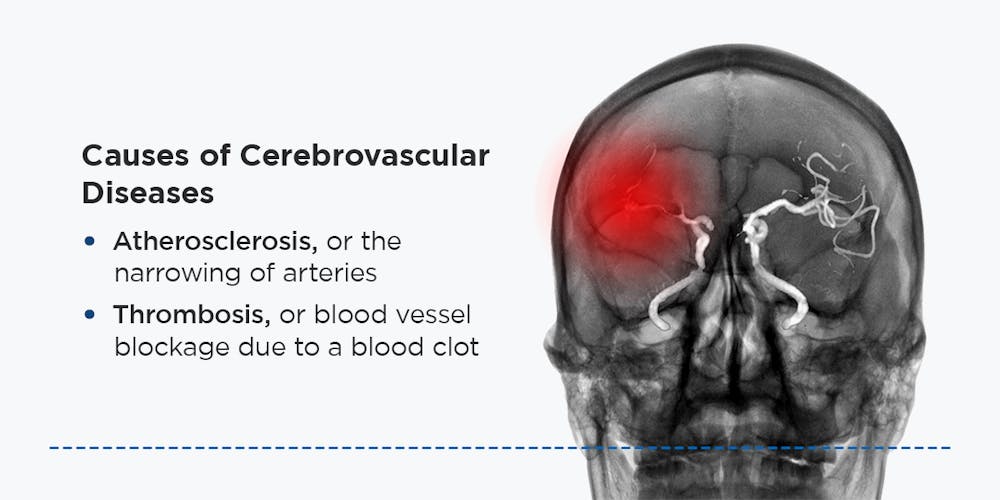Cerebrovascular diseases are various conditions that affect the blood vessels that run to and from the brain. These diseases occur when an innate or newly formed blockage prevents oxygen from reaching brain cells. Cerebrovascular diseases can cause brain damage, so emergency treatment is often necessary, usually by way of medication or surgery.
Warning Signs and Symptoms of Cerebrovascular Diseases
Cerebrovascular diseases manifest in different ways depending on the blockage’s location and how heavily it affects the brain tissue. Common symptoms include:
- Severe headaches.
- Weakness or paralysis on one side of the body.
- Loss of vision on one side.
- Confusion.
- Loss of balance.
- Nausea.
- Difficulty speaking.
- Reduced reflexes.
- Loss of sensitivity in the face, leg or arm.
Types of Cerebrovascular Diseases
Cerebrovascular diseases include:
- Arteriovenous fistula (AVF).
- Arteriovenous malformations (AVM).
- Carotid stenosis.
- Cerebral aneurysm.
- Cerebral cavernous malformations (CCM).
- Embolism.
- Hemorrhagic stroke.
- Ischemic stroke.
- Transient ischaemic attack (TIA).

Causes of Cerebrovascular Diseases
The factors that lead to cerebrovascular disease involve the following conditions, which pertain to the arteries and veins running to and from the brain:
- Atherosclerosis, or the narrowing of arteries
- Thrombosis, or blood vessel blockage due to a blood clot
Cerebrovascular diseases, often associated with strokes, are more likely to occur from ages 55-85. The likelihood increases with family history. However, a stroke can occur at any age.
The risk of cerebrovascular disease increases in those with hypertension, high cholesterol and diabetes. Additional contributing factors include obesity, smoking, a poor diet and a lack of exercise.
Some patients develop cerebrovascular diseases during pregnancy from the increased likelihood of a blood clot forming in the brain. Hormone replacement therapy (HRT) may increase the risk of cerebrovascular disease in those with prior atherosclerosis or carotid artery disease.
Treatments for Cerebrovascular Diseases
Immediate treatment is necessary after any cerebrovascular event. Doctors may implement various treatments depending on the severity of the blockage or narrowing. Medication can restore blood flow and prevent an ischemic stroke if the blockage or narrowing is less than 50%. Treatments that doctors use to remove more severe blood clots in arteries or veins include:
- Catheter-directed mechanical thrombectomy.
- Surgery, such as carotid endarterectomy or carotid angioplasty and stenting.
Contact New York Spine Institute
Any cerebrovascular disease calls for immediate treatment, so visit a nearby doctor as soon as you can. New York Spine Institute has numerous locations in New York, where our doctors treat cerebrovascular diseases and the conditions which precede them. We encourage you to call 1-888-444-NYSI to schedule an appointment.
